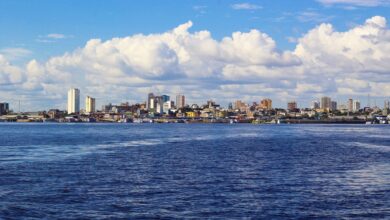Are You Being Fooled?: The Farce Behind Eco Friendly Products
Behind eco-friendly products there is a complete farce that companies have created from an apparently conscious discourse. We all fall into the trap .

Photo: Rawpixel
LatinAmerican Post | Vanesa López Romero
Listen to this article
Leer en español: ¿Te estás dejando engañar?: la farsa detrás de los productos eco friendly
For a few years, the environmental and anti-climate change movements have gained popularity. This, thanks to the visibility that international organizations and the media have given them. And it is that no less should be expected, since the climatic and environmental crises threaten to be the cause of the next extinction of our species and of the world as we know it. This has generated that both from the high political and industrial spheres as well as from the individuality , measures are taken that can generate a greater impact to not only take care of the planet, but also curb the consequences that we are already experiencing.
As these movements grow and become important in our daily lives, industries have been providing "eco friendly" options, which, as the name implies, refers to products that are "friendly" to the environment. The rise and growth of this type of product that we see today is intrinsically related to advertising campaigns that appeal to fleeting feelings and a lack of true empathy. And it is that we cannot deny that the discourse of eco friendly products manages to touch fibers.
But how good is this? Anyone could say that it is very good, in the long run they are promoting products that can help save the environment. But the sad reality is that "eco friendly" is merely a label that has been used exclusively as a marketing strategy.
The issue, we could summarize it, is that companies do not see climate change and the environmental crisis as a problem. What they see as a problem is that it is a growing issue, people pay attention to it, become aware and decide not to buy products that can continue to contribute to the issue. How is it solved? Creating products that claim on their label that they do not contribute to the problem, but rather, on the contrary, are helping to save the world. In other words, they did not create a product based on an environmental, political and environmental problem; on the contrary, they responded to the demand and from that they created a market. In other words, they followed the basic rules of a capitalist system, which is precisely one of the economic systems that is most dangerous for planet earth and its well-being.
What is eco friendly is greenwashing
The main problem with this label is that companies use it deliberately to refer to certain products that promise to solve a problem, while behind these there are production chains or other products from the same company that further increase the main problem. A clear example is Nestle, which has taken an apparently firm position regarding the importance of water and its conservation, taking tons to communities, creating campaigns for its protection, etc. However, Nestle is still a company that produces millions of plastic bottles to bottle its water, and other single-use plastics for many more of its products. Of course, these plastics end up in the sea and are one of the main causes of pollution and maritime contamination.
Various studies, including the article Sins of Greenwashing by Underwriters Laboratories, show that more than 90% of the products that have this label fall into what they call "the sins of greenwashing". These are: the hidden trade-off, the lack of evidence to verify that it is an organic product, false labels, irrelevance regarding components, the lesser of the two evils (which consists of distracting the consumer about the processes behind production), and lying and making claims about certificates and registrations.
In other words, brands use these tools to make their consumers believe that their eco-friendly products are transparent, but the reality is that they continue to generate as much pollution and are just as dangerous as products that do not have this label.
We suggest you read: Lithium: What Does the So-called 'White Gold' Represent for Latin America?
And then what to do?
The answer may seem simple, but it really is not. It is about researching, judiciously sitting down to understand the limitations of certain companies and their products and also understanding that production chains will never be 100% sustainable, as long as they are carried out by companies with merely financial interests. The recommendation? Avoid eco-freindly products from big brands at all costs.
Today, there are thousands of brands that are born with the purpose of solving the problem, not half adapting to a market. When buying products that do comply with being sustainable, you must fully understand the production chain. Ask questions like: Are the products 100% natural? If not, what are the non-natural components that it has? Who produces them? Under what conditions? How is the waste process?
Having the possibility of buying locally and from businesses that are really interested in making a change is not only a great advantage, but it also helps you not to be fooled.




